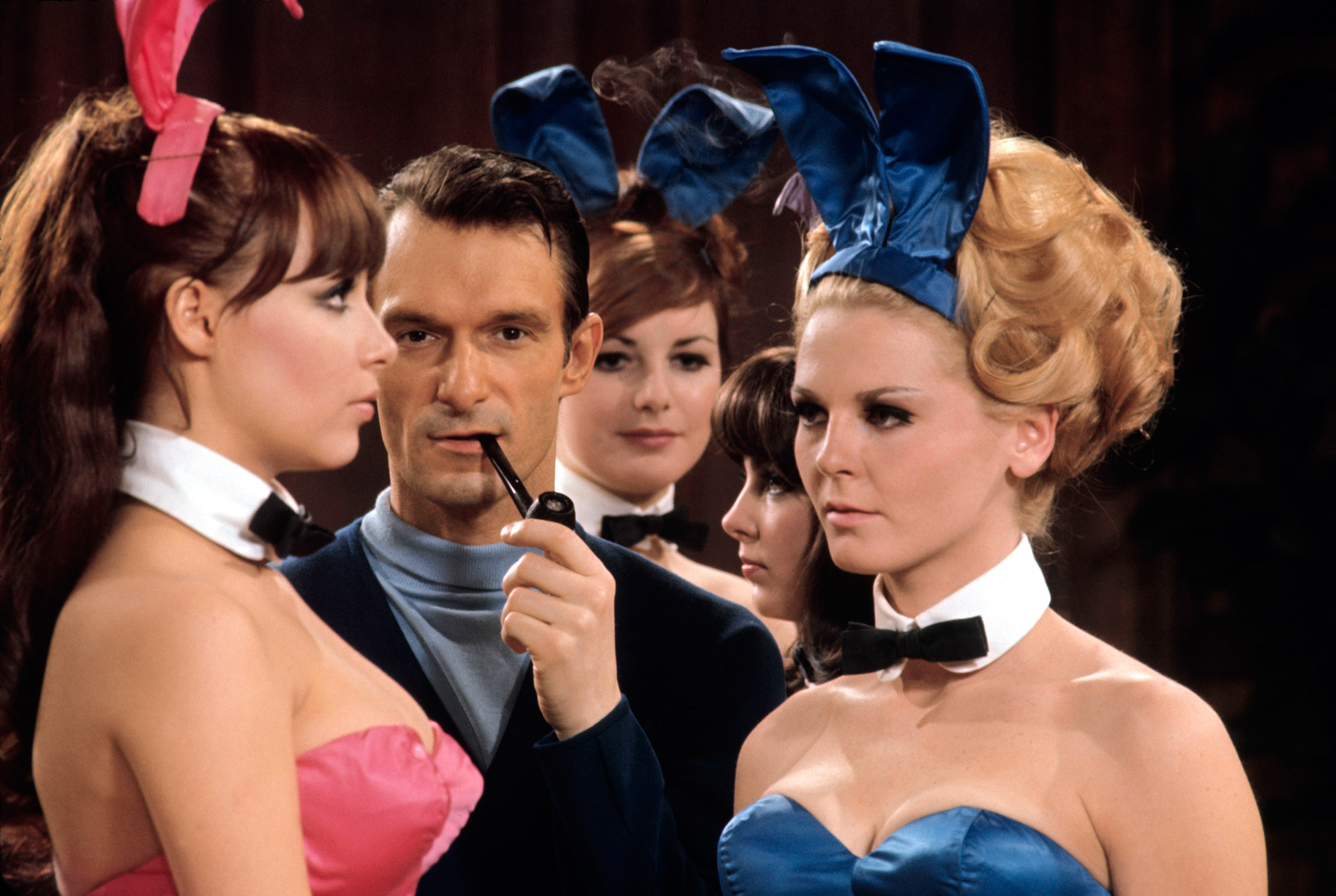I am a proud, ball-busting feminist who drinks male tears and wears misogynist blood for lipstick, so if there’s one thing I can’t stand, it’s rich, white misogynists who go out of their way to pigeonhole women into roles of subjugation. And perhaps no man has so perfectly embodied that definition as Hugh Hefner has.
Hefner, the “Playboy” founder and so-called father of the sexual revolution who recently passed away, has committed a laundry list of offenses against feminism, the first and most glaring of which is how much he profited off of women’s sexual objectification. The misogynist culture that he helped create, one that relied on the cookie-cutter perfect bodies of a select few women, later led to an entire market centered around female insecurity.
Because Hotshot Hefner was considered the father of a number of different ideas (and likely children), it’s easy to forget how good he was at one thing in particualr, which was branding. The Bunny symbol, which, at the time, rivaled the golden arches of McDonald’s as the most iconic symbol of the era, is both simple and easily recognized, later leading Apple to copy its elegant minimalism.
Hefner perfected his business model so well that “Playboy” became more than just an environment; it became an experience. Any event affiliated with “Playboy” was staffed by a legion of gorgeous, buxom women clad in skin-tight silver uniforms who had been trained to carry themselves in a specific manner. According to the “NY Post,” Hefner insisted that all Bunnies be able to identify 143 brands of liquor, as well as master the “Bunny stance”—with legs together, back arched and hips tucked under—as well as the “Bunny perch” for sitting on the back of a chair and the “Bunny dip,” which required them to bend their knees to serve drinks elegantly.

Playboy Mansion, an ecosystem like none other, was the epicenter of this fantasy world. Interestingly enough, if you take sex, Hefner’s principal product, off the table, you are left with a business model that has continued to thrive to this day, with its most prominent adopter being, once again, Apple. The tech giant copied Hefner’s strategy of creating an ecosystem for the total user-experience, a one-stop shop for all your tech (or sex fantasy) needs. Different desires are filled by different niches—laptops, tablets, headphones, phones, keyboards—but each experience is familiar to each other. One could argue that, as an entrepreneur, Hefner did more than entertain; he built an empire as accessible as the iPhone in your hand.
However, while as a businessman most of his money went mainly to his products, the Bunnies, a good portion of his funds also went to bankrolling social change. As a result, through the success of his magazine, Hefner was able to achieve notoriety both as a somewhat seedy public figure and promoter of the feminist agenda.
Young people are aware of “Playboy,” but the taboo nature has prevented many of us from opening one of the magazines, especially a vintage one. Recently, I came upon a pile of the vintage publications and was thrown off by the length and depth of the articles. For many young people, “Playboy” is just a predecessor of Porn Hub or some other sexually explicit institution—an avant-garde porn purveyor of the mid-twentieth century, but nothing more. In reality, the magazine placed a lot of emphasis on its literary offerings, priding itself on pushing the boundaries of creative expression in text as well as photo. The magazine includes interviews with Malcolm X, Muhammed Ali and Martin Luther King Jr., proving that “Playboy” wasn’t just for the horn-dog bachelor, but also for your professor’s political update. Did men pick up “Playboy” for a good afternoon read? Nope, but Hefner’s brand depended on conveying an aura of sophistication, which meant that its editorial offerings had to hold their own.
Additionally, “Playboy” put black Bunnies on their cover in a time when black girls were seen as unworthy. “Playboy” was born during a time of civil unrest, and its radical nature had no choice but to expand. As a result, black women and entertainers were displayed in a medium that held the captive attention of white men across the country, which, if history has proven anything, is incredibly helpful to instigating change. Hefner showed men that black women can be a sexy late-night snack and proved that black performers are valuable. Hefner created a diverse audience and also made sure his franchise clubs allowed people of color in. Black women being allowed in the white man’s game—at a time in which black women were on the bottom end of the totem pole—was part of the broader movement to normalize desegregation by representing multiraciality in mainstream media.
The magazine placed a lot of emphasis on its literary offerings, priding itself on pushing the boundaries of creative expression in text as well as photo.
In fact, the publication has had a hand in plenty of social issues other than race. For instance, “Playboy” and Hefner vocally supported abortion eight years before Roe v. Wade was decided, and nothing is sexier than endorsing women’s reproductive rights, am I right, ladies? Beyond their progressive abortion record, the brand also helped make rape kits a mainstream product. In 1978, a Chicago cop named Louis Vitello helped put together the tools for the first ever rape kit, a collection of microscopic slides, clothes boxes, cotton swabs, combs and baggies that would allow for the easy collection of forensic evidence following an alleged rape. Martha Goddard, a sexual assault survivor and women’s rights activists, made the public case for the kits, testifying to legal personnel and other key figures, often up to sixteen hours a day, about the importance of the kits. Unfortunately, the duo needed a substantial influx of capital to get their invention off the ground, and that’s when Hefner stepped in. The “Playboy” kingpin donated $10,000 to the cause, a substantial amount of money in the late seventies. The next year, in 1979, the first man was imprisoned for rape using DNA evidence procured using their kit.
So, like most modern individuals, Hefner’s legacy will neither be all good nor all bad. A mixed bag philosophically, Hefner, overall, helped spur on the sexual revolution that was beginning in the late fifties and early sixties. Though he was a hetero, affluent white male who chauvinistically paraded women around as sex object, a fair amount of good, some intentional but most unintentional, came as the result of his actions. At a time so patriarchally rigid as 1950s America, it was inevitable that change would have to come from someone within the system, so while Hefner was no saint, he played a necessary role in helping move the needle just enough to help usher in an unprecedented era of sexual freedom and women’s rights.

















